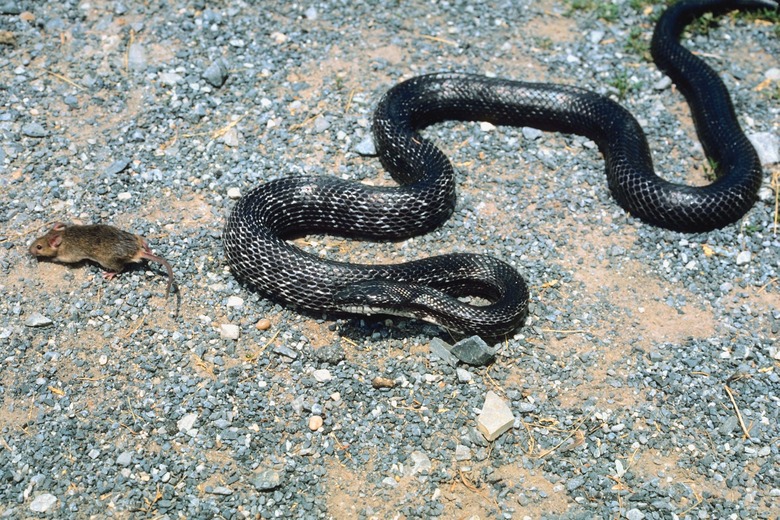How To Get Rid Of Black Snakes In Central Florida
Step 1
Observe the size of the snake to help determine if it is one of the four venomous snakes common to central Florida. Diamondback rattlesnakes usually range between 3 and 6 feet in size. The pygmy rattlesnake is about 1 to 2 feet in size. The cottonmouth is anywhere from 1 1/2 feet to 4 feet in size. The coral snake is anywhere from 1 1/2 feet to 2 1/2 feet in size.
Step 2
Observe the primary colors and markings of the snake. All four venomous snake species in central Florida have black markings. The diamondback rattlesnake is dark to light brown with black diamonds on its back and a rattle on its tail. The pygmy rattlesnake is gray in color with blotches of dark gray or brown that can appear black, and it has a rattle on its tail. The cottonmouth's coloring ranges from black to brown, and it has dark brown markings all over its body. The coral snake has bands of black, red and yellow.
Step 3
- Observe the size of the snake to help determine if it is one of the four venomous snakes common to central Florida.
- The diamondback rattlesnake is dark to light brown with black diamonds on its back and a rattle on its tail.
Step 4
Observe the location of the snake. The diamondback rattlesnake prefers flatlands with fields or grass and pine tree areas. The pygmy rattlesnake likes pine flatlands, lakes, freshwater marshes and grasslands. The cottonmouth prefers to live in or around rivers and swamps and the bushy areas surround them. The coral snake likes a variety of environments, such as swamps or dry flatlands.
Step 5
Contact animal control in your area if you believe the snake you are dealing with is one of these four venomous types.
Capture Method One: Rake
Step 1
Use small plastic child's rake to snag a non-venomous snake between the prongs. You can use an adult rake, but children's rakes have prongs that are closer together, making it easier to entangle the snake, and the handle is shorter, making it easier to maneuver.
Step 2
- Observe the location of the snake.
- The diamondback rattlesnake prefers flatlands with fields or grass and pine tree areas.
Step 3
Catch the snake around its center. This will keep gravity from pulling it instantly off the prongs of the rake.
Step 4
Place your caught snake into a small trash can with a lid.
Step 5
Transport your snake away from your home and release it into the wild.
Capture Method Two: Traps
Step 1
Purchase a snake trap from your local home improvement or garden supply store. There are a number of traps you can choose from that vary in price. Two common traps are glue traps or cage traps.
Step 2
- Catch the snake around its center.
- Place your caught snake into a small trash can with a lid.
Step 3
Place your trap. The best location for your trap is along a wall where you have seen the snake frequently. Set up the trap according to package instructions.
Step 4
Leave the trap, but check back daily to see if has caught any snakes. Remove any trapped snakes and place them in a 5-gallon bucket. Follow the trap's instructions for safe snake removal.
Step 5
Place a lid or a piece of cardboard over the top of your bucket. Transport the snake several miles from your home to an open area, and place the bucket on its side to allow the snake to free itself. Taking the snake away from your home will help prevent it from returning.
Step 6
- The best location for your trap is along a wall where you have seen the snake frequently.
- Transport the snake several miles from your home to an open area, and place the bucket on its side to allow the snake to free itself.
